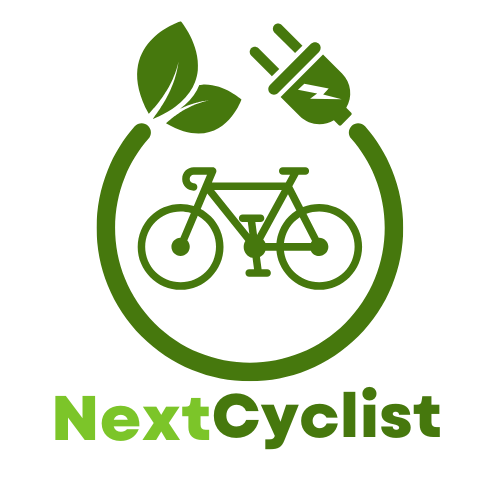A 1000W motor at 48V can reach speeds of about 20-30 mph. The actual speed depends on factors such as terrain, weight, and efficiency. For optimal performance, ensure proper maintenance and monitor conditions.
Introduction
If you’re curious about how fast your 1000W 48V ebike can really go, you’re in good company. Many riders wonder about the speed capabilities of their ride since wattage and voltage play crucial roles in performance. Why does it matter? Understanding these factors can help ensure you get the most from your electric bike, whether you’re commuting to work, cruising through the park, or tackling trails.
So, what’s the scoop? In this article, we’ll break it down for you in simple terms. We’ll explore how both wattage and voltage influence the speed of your ebike, specifically what you can expect from a 1000W 48V setup.
Ready to uncover the facts? By the end, you’ll have a clear understanding of the speed potential of your ebike, along with some tips to maximize its performance. Let’s rev up your knowledge and make every ride count!
TL;DR
- A 1000W motor provides excellent acceleration and can achieve speeds of 28-35 mph at 48V under optimal conditions.
- Wattage indicates motor power; higher wattage translates to more speed and torque.
- Weight, terrain, and bike design impact speed: heavier riders slow down; flat terrain allows for higher speeds, while hills require more power.
- Wind resistance affects performance; a streamlined bike design and forward riding position can reduce drag.
- Battery health is crucial for power delivery; regular maintenance boosts performance and speed.
Understanding Watts and Volts for E-Bikes
When it comes to ebikes, understanding the interplay between wattage and voltage is crucial for maximizing your ride. Wattage specifically indicates the power output of the ebike’s motor, while voltage determines how much energy is supplied to that motor. In practical terms, higher wattage generally translates to more speed and torque, making your electric bike more powerful.
- Wattage indicates the power output of the ebike’s motor: For instance, a 1000W motor can provide significant acceleration and climbing ability, especially on steep inclines.
- Voltage determines energy supply: A 48V system is common for many powerful ebikes, efficiently delivering the energy needed to sustain high speeds.
- Higher wattage typically means more speed and torque: This means if you’re looking for thrill, a higher wattage motor is often your best bet.
- A 1000W motor at 48V can achieve speeds of 28-35 mph under optimal conditions: So, if you’re zipping down flat terrain, you might be surprised at just how fast you can go!
- Factors like weight, terrain, and bike type can influence real-world performance: Heavy loads, rough surfaces, and the type of ebike (like a mountain bike versus a commuter bike) can all affect how well your ebike performs in practice.
Understanding these basics can help you make informed choices when using or modifying your ebike. If you’re considering different configurations, using a tool like an e-bike battery calculator can help you optimize performance based on your needs.
Here’s a simple comparison table to visualize the differences in speed potential based on wattage:
| Motor Wattage | Voltage | Speed (mph) |
|---|---|---|
| 250W | 36V | Up to 20 |
| 500W | 48V | Up to 24 |
| 1000W | 48V | 28-35 |
| 1500W | 48V | 35-40 |
Being in the know about wattage and voltage can enhance your experience on your ebike. If maintaining your ebike is your goal, check out our complete guide to e-bike maintenance for tips!
Factors Affecting Speed on a 1000W E-Bike
If you’re curious about how fast a 1000W e-bike can go, understanding the factors that affect its speed is crucial. Several elements play a significant role, so let’s break them down for you.
Rider weight impacts acceleration and overall speed.
Your weight has a direct influence on how your e-bike performs. Heavier riders may experience slower acceleration and lower top speeds due to the increased force required to move. To maximize speed, aim for a lighter setup by removing any non-essential gear. But, remember, safety comes first—never compromise on protective equipment.
Terrain type (flat vs. hilly) significantly alters performance.
Riding on flat terrain allows your electric bike to gain more speed with less effort. Conversely, tackling hills demands more power from your 1000W motor, which can drain the battery quickly. If you plan to ride on varied terrain, consider an e-bike with a good range. Test your bike at different locations to get a sense of what speeds to expect.
Wind resistance varies based on bike design and riding position.
Aerodynamics matter. If your e-bike has a more streamlined design, like a road bike style, it can cut through the air more efficiently. Your riding position matters too—leaning forward can reduce wind resistance. To enhance speed, adopt a lower profile while riding and consider wearing tight-fitting clothing to minimize drag.
Battery condition can affect how much power is delivered to the motor.
The battery’s health can directly impact your e-bike’s performance. An old or poorly maintained battery will struggle to deliver the required power, causing drops in speed. Regularly check your battery’s condition, and replace it if you notice a significant decline in performance.
Proper maintenance ensures optimal performance and speed.
Keep your e-bike in tip-top shape with regular maintenance. Simple tasks like checking tire pressure, lubricating the chain, and keeping the brakes in good working order can enhance performance. A well-maintained bike not only runs better but can reach higher speeds and provide a safer ride.
| Factor | Impact on Speed |
|---|---|
| Rider Weight | Heavier = Slower Acceleration |
| Terrain Type | Flat = Faster, Hilly = Slower |
| Wind Resistance | Streamlined = Less Drag |
| Battery Condition | Health = Power Delivery |
| Maintenance | Regular Care = Optimal Speed |
By considering these factors, you can better understand how to optimize the speed of your 1000W e-bike and enjoy a smoother ride!
To sum it all up, knowing how fast your 1000W 48V ebike can go is all about understanding the relationship between wattage, voltage, and the various factors that affect speed. We’ve seen that a 1000W motor can hit speeds of 28-35 mph under the right conditions, depending on things like rider weight, terrain, and aerodynamics. This insight not only helps you ride smarter but also empowers you to maintain your ebike for peak performance.
So, what’s next? Dive into our other guides on ebike maintenance and upgrades so you can keep your ride in tip-top shape. Don’t miss out on those speed thrills—take action and gear up for your next adventure. Subscribe for more tips or check out our resources that can guide you in making the most of your electric ride. Let’s keep those wheels turning!

